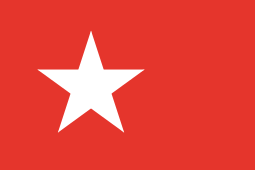Meuse-Inférieure

Meuse-Inférieure ("Lower Meuse"; Dutch: Nedermaas or Beneden-Maas; German: Niedermaas) was a department of the First French Empire in present-day Belgium, Netherlands and Germany. It was named after the river Meuse. Its capital was Maastricht. Its territory corresponded largely with the present-day provinces of Belgian and Dutch Limburg.
The department was formed in 1795, when the Southern Netherlands and the left bank of the Rhine were annexed by France. Before the French occupation, the area was divided in several bigger and smaller states, among which:
- The County of Loon (Prince-Bishopric of Liège)
- Austrian Upper Guelders (The part of Upper Guelders belonging to Austria)
- Staats-Oppergelre (The part of Upper Guelders belonging to the United Provinces)
- The County of Horne (Bishopric of Liège)
- The abbacy of Thorn
- Maastricht and part of the Lands of Overmaas (also divided between Austria, and the United Provinces)
(The lands of the original medieval Duchy of Limburg were associated with the Overmaas lands, lying to their south. The two regions had long been governed together and referred to collectively with both names, but the original Duchy lands were not part of this new entity.)
The department was subdivided into the following arrondissements and cantons (situation in 1812):[1]
- Maastricht, cantons: Bilzen, Gulpen, Heerlen, Maasmechelen, Maastricht (2 cantons), Meerssen, Oirsbeek, Rolduc (now Dutch Kerkrade and German Herzogenrath) and Tongeren.
- Hasselt, cantons: Beringen, Borgloon, Hasselt, Herk-de-Stad, Peer and Sint-Truiden.
- Roermond, cantons: Achel, Bree, Maaseik, Niederkrüchten, Roermond, Venlo and Weert.
Its population in 1812 was 267,249, and its area was 378,633 hectares.[1]
After Napoleon was defeated in 1814, the department (excluding Niederkrüchten and Herzogenrath which were assigned to the Kingdom of Prussia and are presently located in North Rhine-Westphalia) became part of the United Kingdom of the Netherlands, as the Province of Limburg (with a part of the Roer département). (Hence they were named after a medieval Duchy which strictly speaking had been in a different but neighbouring territory.)
In subsequent events starting in 1830, a part of this Kingdom split out to become Belgium. By 1839 it was settled that the Hasselt canton of Limburg, plus significant parts of the other two, went into Belgium, while the rest remained in the Netherlands. Both provinces have kept the name Limburg.
References
- 1 2 Almanach Impérial an bissextil MDCCCXII, p. 436-437, accessed in Gallica 25 July 2013 (in French)
Coordinates: 51°0′N 5°35′E / 51.000°N 5.583°E
